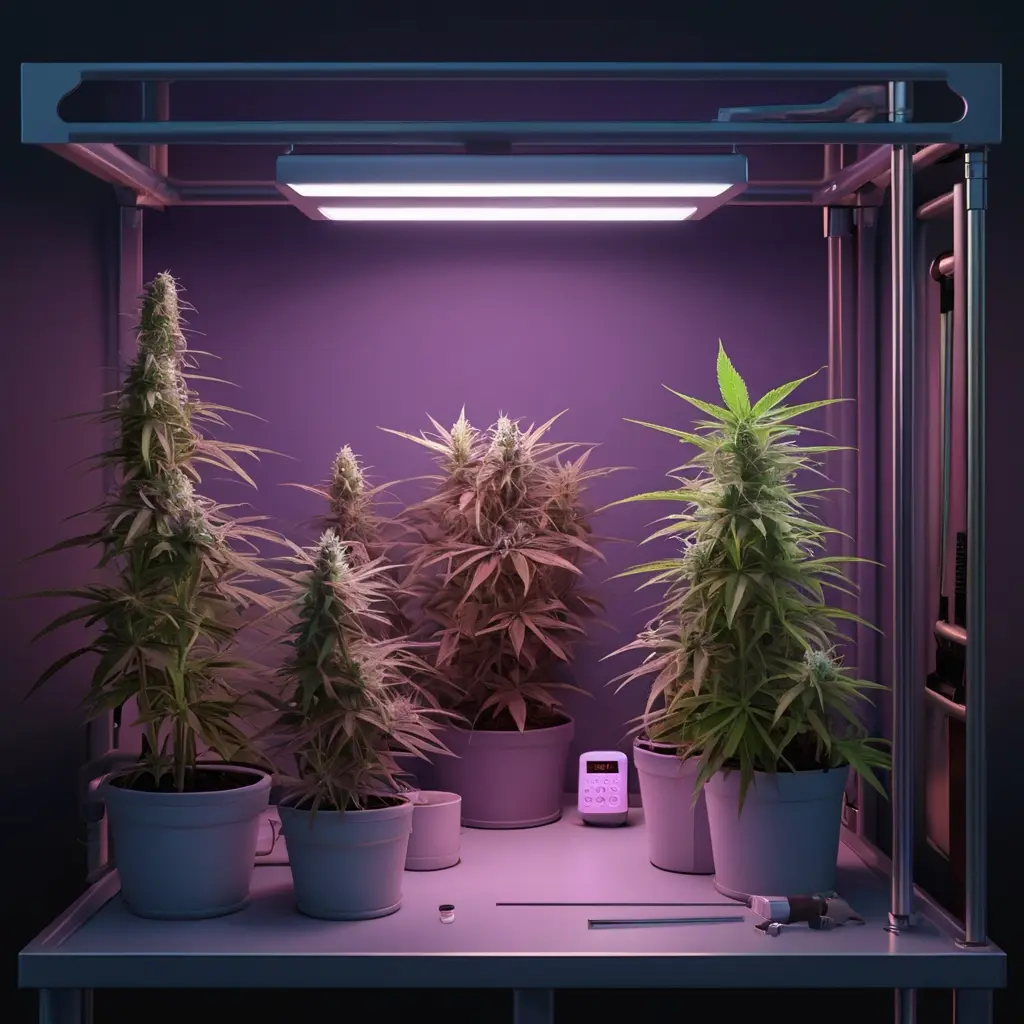Light plays a crucial role in cannabis cultivation—not only for growth but also for the potency of the plants. Many growers focus on nutrients and watering, but neglect how different light spectra can affect THC production. In this article, you’ll learn which light colors are most effective and how to use them to achieve higher THC levels.

Why the light spectrum is so important
Cannabis plants use light not only for photosynthesis but also as a signal for their development. Different wavelengths trigger different reactions:
Blue light (400–500 nm): Promotes bushy growth and stronger stems – ideal for the vegetative phase.
Red light (620–750 nm): Promotes flowering and increases resin production, which directly affects THC levels.
UV light (280–400 nm): Can stimulate THC synthesis because the plant produces more resin as a protective response.
Critical question: Is it sufficient to simply use red light during the flowering phase? Not necessarily – studies show that a combination of blue and red light during different phases produces the best results.
Practical ways to increase THC levels
1. Use full-spectrum LEDs
Modern LED lamps offer a balanced light spectrum that optimally supports all growth phases. Compared to high-pressure sodium (HPS) lamps, they deliver more targeted wavelengths and save energy.
2. Use UV light specifically
Some growers experiment with UV lamps during the late flowering phase. The theory is that the plant produces more THC as a protective mechanism. But be careful – too much UV light can damage the plant!
3. Do not disturb the dark phase
Cannabis needs absolute darkness during the flowering phase to avoid stress. Even brief interruptions in light can impair THC production.
Alternative perspective: Some argue that additional nutrients like terpene boosters are more important than light. However, without proper lighting, these nutrients won’t reach their full potential.
Common mistakes and how to avoid them
Too much heat: Strong light does not automatically mean better results – burnt leaves reduce efficiency.
Incorrect light cycles: Switching to 12/12 (flowering phase) too early can inhibit growth.
Cheap lighting: Poor lamps with an unbalanced spectrum lead to poor yields.
Conclusion: The right lighting strategy is a key factor for highly potent cannabis. Experiment with different spectra, but stay scientifically sound – not every “insider tip” works!
Source: https://www.royalqueenseeds.de/blog-cannabisanbau-das-lichtspektrum-und-wege-um-den-thc-gehalt-zu-steigern-n269